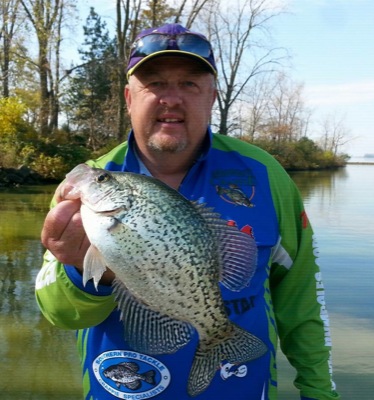Saturday, September 19th, 2015
Drug court graduates first 3 participants
By Claire Giesige
CELINA - As 2013 drew to a close, Ohio prisons were brimming, over 200 people were on probation in Mercer County and the area's heroin problem seemed to be reaching a boiling point.
On Jan. 1, 2014, the Mercer County Drug Court Program debuted in an effort to stem the flow of heroin addicts in the county. Now, a year and a half later, the program is ready to graduate its first three participants after 18 months of intensive therapy.
"'Drug Court' is a bit of a misnomer. It's really a court-monitored treatment program," Mercer County Common Pleas Judge Jeffrey Ingraham said.
The court combines judicial power with drug rehabilitation treatment in an attempt to get heroin addicts clean and living as productive members of the community.
"Without the drug court program, there were difficulties with patients maintaining their treatment programs consistently," Ingraham said. "The court can say, 'You must follow this or there are specific consequences,' meaning you could go to prison for your crime, understanding that you would violate the terms of your community control sanctions. Then they have that much more of an incentive to follow the terms of their treatment program."
In 2013, officials were notified that Mercer County was one of five counties chosen by the state and included in a statute that authorized funds for medically assisted treatment for opiate addicted people.
To receive the funds, the county had to have a certified drug court in place. With the clock ticking, Ingraham and his team sprung into action.
"When I looked at the process, I saw that it typically takes people a year to set up a drug court. We had six weeks," Ingraham said. "I had my people drop everything and help me."
The judge and his common pleas court team sought input from Keith Turvy, director of Tri County Alcohol, Drug Addiction & Mental Health Services, and Brian Engle, executive director of Foundations Behavioral Health Services, for questions regarding therapy.
The drug court team also looked at other communities that had drug courts, such as Delaware and Ashtabula counties.
"We looked at similar programs so we didn't have to reinvent the wheel," Ingraham said. "We took the best parts of those and put them into our own."
"We've tweaked it a few times since then because we didn't have the luxury of time at the beginning," Mike Huber, the court's chief probation officer added.
Overall, though, the structure remains the same. Participants must apply to the program and meet certain eligibility requirements, such as not having violent crimes, domestic violence or trafficking (at a third-degree felony level or above) convictions.
"Certain crimes are excluded for obvious reasons," Huber said. "We don't want dealers in our drug court. There are people who come through who have sold small amounts to feed their own habits, and they are allowed, but we don't allow drug dealers."
Ingraham sees the program as a good answer to requirements set by the Ohio Supreme Court.
"The law on sentencing has an overriding statute that talks about the principles of sentencings in Ohio for felony crimes. It is punishment of the offender and protection of the public," Ingraham said. "Those are our marching orders: punish offenders and protect the public."
Most drug court participants are fifth or fourth degree felony offenders, the Judge explained. At that level, they typically aren't sent to jail for more than six month, he said.
"So what are we going to do to protect the public from them? We could lock them up, but that's limited to six months, so what happens in six months? They're back out. If we don't get them to choose to quit committing the crimes that are detrimental to our community, then we're not protecting the public," Ingraham said. "So in between punishment and protection of the public comes deterrence. And deterrence is what we really want to do."
Program applicants are investigated by the probation department.
"Once they apply, and generally that means they've also pled guilty, that means they're under pre-sentence investigation," Huber explained. "One of my officers or myself meets with them, investigates their background and prepares a report for the judge. They're also referred to Alicia (Bruce, drug court program coordinator) and then a counselor does an investigation before (Bruce) puts together a report."
That report is then put before the judge who decides whether or not to admit the applicant.
"The buck stops with me," Ingraham said.
Bi-weekly meetings are held to discuss participant progress, and program goals and recognize achievement.
"It goes a long way when the judge says it," Huber said. "Being acknowledged in front of others for doing something positive helps a lot."
The drug court is financed by a state grant. Programs throughout the state split $5 million starting in 2013. Mercer receives $600,000 of that amount.
"The state was so pleased with the outcomes that were presented that they actually doubled the amount of money offered over the next two years," Bruce reported.
The state now offers $11.5 million to be divided among participating counties. The Mercer County program has been approved for the next two years.
"As long as it is helping people deal with this issue and we are contributing to protecting the public, we'll continue. As long as we're seeing some reasonable results," Ingraham said.
Ingraham and Huber both agree that the drug court isn't the only key to solving the heroin problem.
"It's helping with some of the people. That's not the only answer to dealing with this heroin problem," Ingraham said. "Law enforcement is out there trying to do it, the sheriff's office, the prosecutor and the defense counsel, who to their credit are being sensitive to the needs of their clients. Everyone's working on this."



